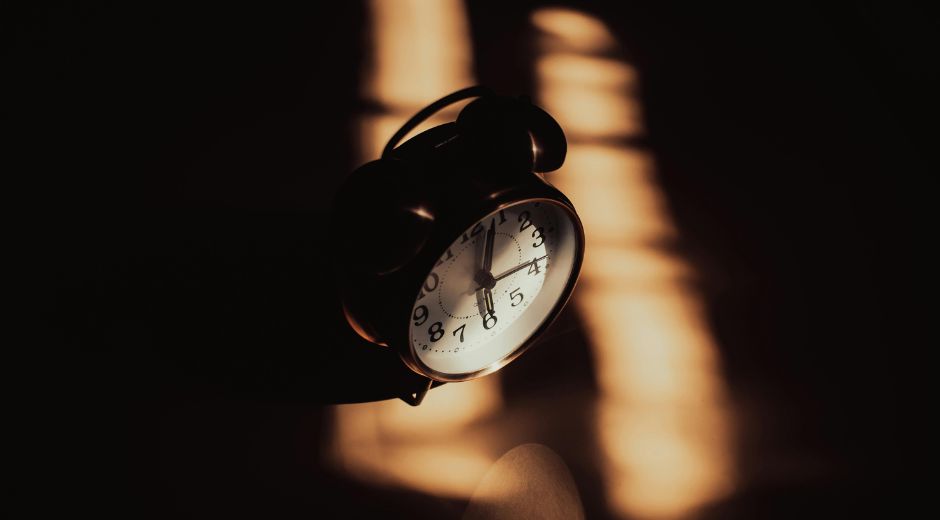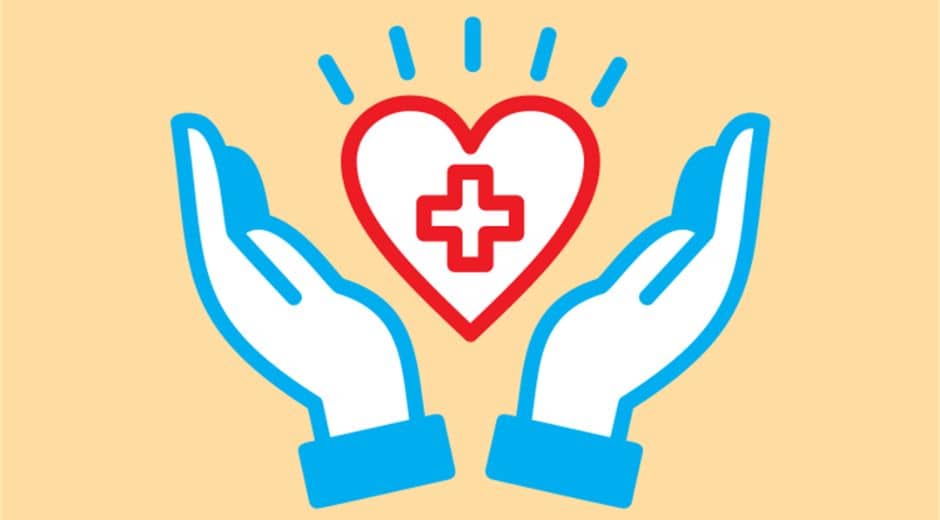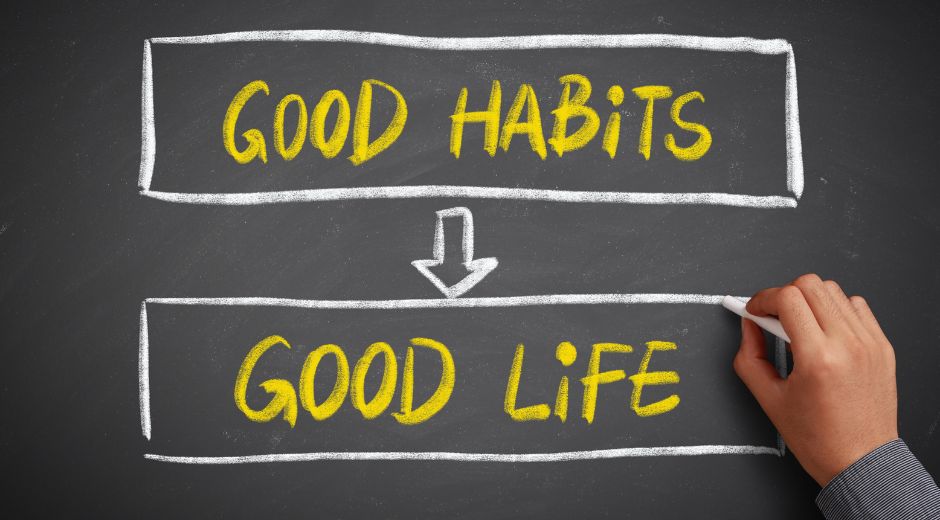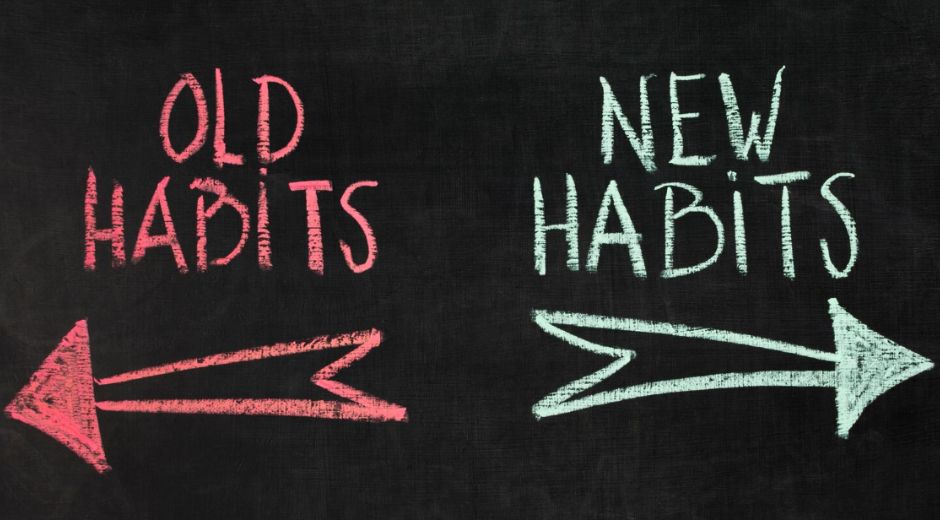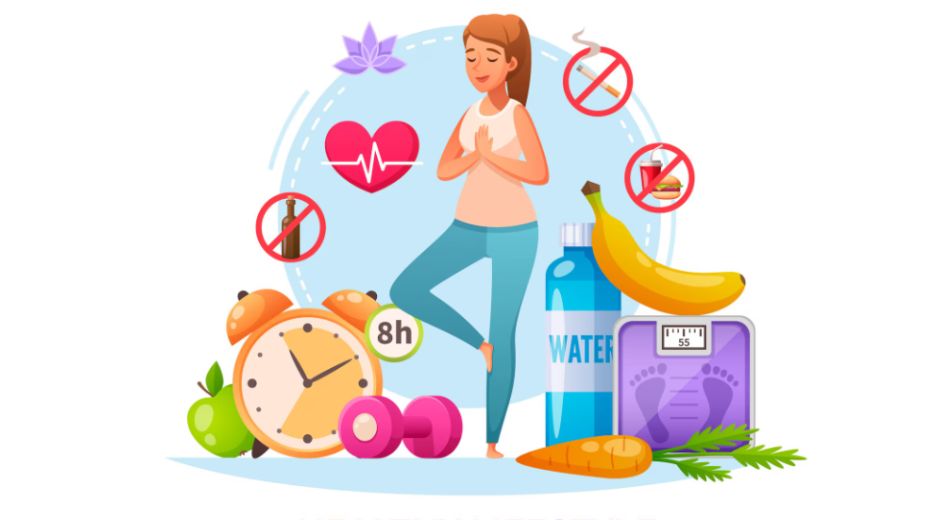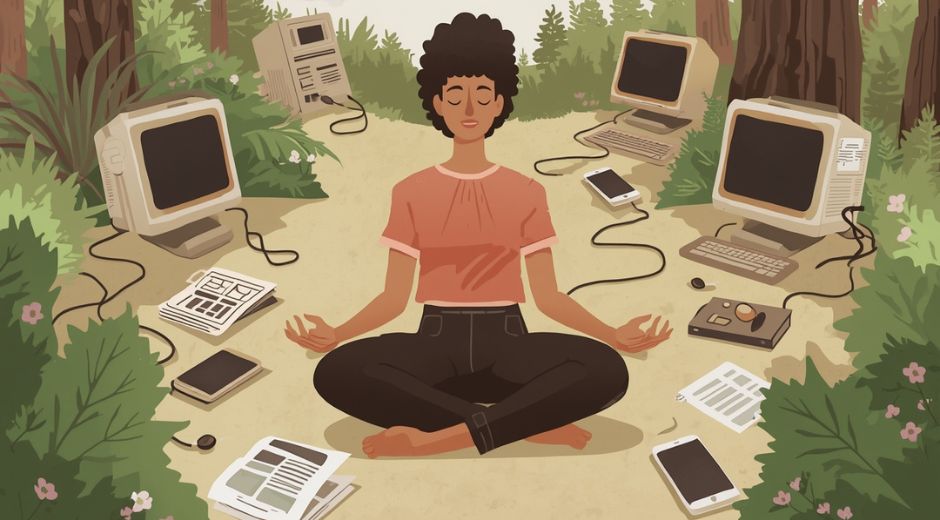Circadian Rhythm: How Your Body’s Internal Clock Shapes Health and Performance
Your body is a symphony of timing. Every cell, hormone, and organ follows a schedule guided by an invisible yet powerful mechanism known as the Circadian Rhythm. This natural 24-hour cycle dictates when you feel alert, hungry, sleepy, or energetic. When it functions properly, life feels balanced and efficient. When disrupted, everything from your sleep to your mood and metabolism can fall out of sync.
Modern science now reveals that aligning with your Circadian Rhythm is one of the most impactful things you can do for long-term health and well-being. Far more than a simple sleep pattern, this internal clock shapes nearly every aspect of human biology.
The Science Behind Circadian Rhythm
The term “circadian” comes from the Latin words circa (around) and diem (day). It refers to processes that repeat roughly every 24 hours. These cycles are controlled by a master clock located in the brain’s hypothalamus, specifically within a cluster of neurons called the suprachiasmatic nucleus (SCN).
This master clock receives signals from the eyes, responding primarily to light. When morning light hits your retina, it sends electrical impulses to the SCN, which in turn triggers the release of hormones like cortisol to promote alertness. As daylight fades, melatonin levels rise, signaling the body to prepare for rest.
This intricate system evolved to synchronize with Earth’s day-night cycle, ensuring that your body’s internal timing matches the environment around you.
The Importance of a Balanced Circadian Rhythm
Maintaining a stable Circadian Rhythm is essential for physical and mental health. It influences:
-
Sleep quality: determines when you naturally feel tired or awake.
-
Metabolism: regulates digestion, nutrient absorption, and fat storage.
-
Hormone release: affects insulin, cortisol, melatonin, and growth hormones.
-
Mood and cognition: impacts focus, creativity, and emotional regulation.
-
Immune function: strengthens defenses during specific times of day.
Disruption to this cycle can trigger fatigue, irritability, weight gain, and even chronic diseases. Research from Harvard Health highlights how consistent misalignment, such as from night shifts or excessive screen exposure, increases risks of diabetes, depression, and cardiovascular issues.
How Modern Life Disrupts Your Rhythm
While humans evolved to wake with the sun and rest with the night, modern lifestyles often ignore that natural order. Artificial lighting, late-night entertainment, long work hours, and digital screens all confuse the body’s internal clock.
Blue light from phones and laptops mimics daylight, delaying melatonin release and making it harder to fall asleep. Irregular meal times and caffeine consumption further confuse the metabolic rhythm. Even small shifts, like staying up two hours later on weekends, can trigger “social jet lag,” leaving you sluggish and unbalanced during the week.
Urban life has essentially created a continuous daylight environment, keeping people in a constant state of alertness. The result is widespread sleep deprivation and hormonal imbalance.
Sleep: The Cornerstone of Circadian Health
At the heart of Circadian Rhythm lies sleep. Each night, the body undergoes a complex series of restorative phases that repair tissues, consolidate memories, and regulate immune responses.
The Circadian Rhythm determines the ideal window for sleep based on body temperature, hormone secretion, and genetic factors. Most people naturally feel sleepy between 10 p.m. and midnight, but consistent exposure to artificial light delays this signal.
Creating a nightly wind-down routine—dimming lights, avoiding screens, and maintaining consistent sleep hours—helps reinforce your body’s natural rhythm.
Even minor improvements in sleep hygiene can lead to significant benefits. Studies show that maintaining a regular bedtime improves attention, creativity, and metabolic efficiency.
Nutrition and the Biological Clock
Eating habits are also closely tied to Circadian Rhythm. The body’s metabolism follows a predictable pattern: it digests and utilizes nutrients more effectively during daylight. Late-night meals disrupt insulin sensitivity and fat oxidation, increasing the risk of obesity and metabolic syndrome.
Experts recommend time-restricted eating, where meals are consumed within a 10- to 12-hour daytime window. This approach not only aligns with your Circadian Rhythm but also promotes cellular repair during nighttime fasting.
Even the timing of caffeine matters. Drinking coffee too late in the day can interfere with melatonin release, delaying sleep onset. Aligning nutrition with daylight supports stable energy and better digestion.
The Role of Exercise
Physical activity is another factor that strengthens your Circadian Rhythm. Morning or early afternoon exercise helps reinforce the body’s natural wake cycle by increasing core temperature and boosting endorphin levels.
Conversely, exercising too late can elevate heart rate and adrenaline, making it harder to wind down at night. Consistent movement during the day, however, improves sleep quality and supports metabolic balance.
Simple habits like walking in sunlight during the morning enhance both mood and circadian alignment by resetting the brain’s internal clock daily.
Technology and Circadian Awareness
In an age of constant connectivity, technology can both harm and help your Circadian Rhythm. On one hand, screens expose you to disruptive blue light. On the other, wearable devices and apps now track sleep stages, light exposure, and heart rate variability to offer personalized insights.
Some smart lighting systems automatically adjust brightness and color temperature to mimic natural daylight, supporting the body’s internal rhythm. Offices are even redesigning workspaces with lighting that adapts throughout the day, improving employee well-being and productivity.
According to Fixolix, researchers are exploring AI-driven circadian management tools that analyze individual patterns to suggest optimal times for sleep, meals, and work. The goal is a lifestyle that harmonizes technology with biology.
Shift Work and Circadian Challenges
For millions of people, shift work is an unavoidable reality. Healthcare workers, factory employees, and emergency responders often operate outside natural light cycles. These irregular schedules severely disrupt Circadian Rhythm, leading to chronic fatigue, digestive problems, and reduced cognitive function.
Organizations are now implementing circadian-friendly policies, such as rotating shifts forward (morning to evening to night) instead of backward, and providing recovery time between shifts. Exposure to bright light during work and blackout curtains during rest also helps reprogram internal clocks.
Though complete adaptation is difficult, structured routines can reduce the strain of night work.
Mental Health and Circadian Alignment
The connection between Circadian Rhythm and mental health is profound. Research shows that disrupted rhythms are closely linked to depression, anxiety, and bipolar disorder. The brain’s neurotransmitters—serotonin, dopamine, and norepinephrine—follow rhythmic release patterns tied to sleep and daylight exposure.
When circadian timing is off, emotional regulation becomes unstable. Morning light therapy has proven to be one of the most effective non-medical treatments for seasonal depression, as it resets biological timing and boosts serotonin levels.
Balanced routines, consistent sleep, and exposure to natural light remain the foundation for emotional resilience.
The Immune System and Circadian Synchrony
Recent discoveries reveal that immune cells also follow a daily rhythm. White blood cell activity, inflammation response, and even vaccine effectiveness vary depending on the time of day.
When your Circadian Rhythm is synchronized, the immune system functions optimally, identifying and fighting pathogens efficiently. Disruption, however, weakens this timing, leaving the body more vulnerable to illness.
Some researchers suggest that in the future, medication timing could be personalized based on circadian cycles, maximizing therapeutic effects while minimizing side effects.
The Connection to Longevity
Long-term studies show that consistent alignment with natural cycles may promote longevity. Animals with stable circadian patterns live longer and exhibit better health markers.
Humans who maintain regular sleep-wake schedules, balanced meal times, and adequate daylight exposure experience improved metabolic and cardiovascular outcomes. Chronic disruption, by contrast, accelerates cellular aging and increases oxidative stress.
In other words, living in harmony with your Circadian Rhythm is a simple but powerful form of preventive medicine.
How to Restore Your Circadian Balance
Realigning your body’s internal clock requires intentional habits. Below are evidence-based strategies:
-
Prioritize morning light exposure – Spend at least 15 minutes outside within the first hour after waking.
-
Maintain consistent sleep hours – Go to bed and wake up at the same time daily, even on weekends.
-
Limit screen time before bed – Use blue light filters or avoid screens an hour before sleeping.
-
Eat within daylight hours – Keep a consistent eating window and avoid heavy meals at night.
-
Move regularly – Exercise in the morning or early afternoon.
-
Create a bedtime ritual – Dim lights, stretch, or read to signal your body to slow down.
-
Avoid stimulants late in the day – Caffeine and nicotine can delay the natural onset of sleepiness.
-
Sleep in darkness – Block all artificial light and maintain a cool room temperature.
Small, consistent changes can reprogram your body’s clock within two to three weeks.
Circadian Design: The Future of Architecture and Workspaces
Designers and architects are increasingly incorporating Circadian Rhythm principles into homes and workplaces. Circadian lighting systems adjust color temperature throughout the day, while window placements and materials maximize natural light exposure.
Corporate wellness programs now include circadian training, helping employees plan tasks during their peak focus hours. Some companies use biometric feedback to design individualized work schedules aligned with each employee’s biological rhythm.
At Newspapersio.com, we explore how these environmental innovations can boost both productivity and mental health by respecting the body’s innate timing.
The Broader Cultural Shift Toward Natural Living
The rediscovery of Circadian Rhythm is part of a larger cultural movement toward living in harmony with nature. As awareness grows, people are rejecting the “always on” mentality of modern life. Wellness trends like digital detoxes, daylight therapy, and mindful routines are direct responses to circadian imbalance.
This shift reflects a collective realization that human performance cannot be separated from biology. The more we align with natural rhythms, the more vibrant, focused, and resilient we become.
Conclusion: Living by the Clock Within
Your Circadian Rhythm is not just a biological curiosity. It is the silent conductor orchestrating every heartbeat, hormone release, and thought. Respecting its timing is one of the most effective ways to restore energy, emotional balance, and long-term health.
When you eat, move, work, and rest in harmony with your internal clock, life unfolds with greater ease and clarity. The modern world may run on artificial schedules, but your body still listens to the rhythm of light and darkness.
Mastering that rhythm is not about rigid control, but about awareness. It is about learning to dance with your body’s natural tempo and rediscovering the vitality that comes from being aligned with time itself.
The Pulse of Sport

Economic Blocs: How Regional Alliances Are Redefining Global Power
Economic Blocs: How Regional Alliances Are Redefining Global Power examines how nations unite through trade and policy to shape the world economy.

Blue Zones: Unlocking the Secrets of Longevity and Purposeful Living
Blue Zones: Unlocking the Secrets of Longevity and Purposeful Living explores how specific communities thrive through balance, purpose, and healthy habits.

Soundscapes: How Sonic Design Shapes Emotion and Immersion in Modern Culture
Soundscapes: How Sonic Design Shapes Emotion and Immersion in Modern Culture explores how music, noise, and silence influence perception and creativity.

Edge Intelligence: The Next Frontier of Smarter, Faster, and Decentralized Computing
Edge Intelligence: The Next Frontier of Smarter, Faster, and Decentralized Computing explores how AI and edge systems redefine real-time data processing.

Sanctions and Global Power: How Economic Pressure Shapes Modern Diplomacy
Sanctions and Global Power: How Economic Pressure Shapes Modern Diplomacy explores how nations use trade, finance, and policy to influence global decisions.

Circadian Rhythm: How Your Body’s Internal Clock Shapes Health and Performance
Circadian Rhythm: How Your Body’s Internal Clock Shapes Health and Performance explores how daily cycles influence sleep, energy, mood, and longevity.

Immersive Theater: Redefining How Audiences Experience Storytelling
Immersive Theater: Redefining How Audiences Experience Storytelling explores how interactive performance reshapes art, emotion, and audience connection.

Digital Twins: How Virtual Replicas Are Powering Real-World Innovation
Digital Twins: How Virtual Replicas Are Powering Real-World Innovation explores how this technology reshapes industries from healthcare to aviation.

AI-Driven Cybersecurity: The Future of Digital Defense in a Hyperconnected World
AI-Driven Cybersecurity explores how artificial intelligence is transforming global digital defense, reshaping threat detection, and redefining the future of technology innovation. Insights
